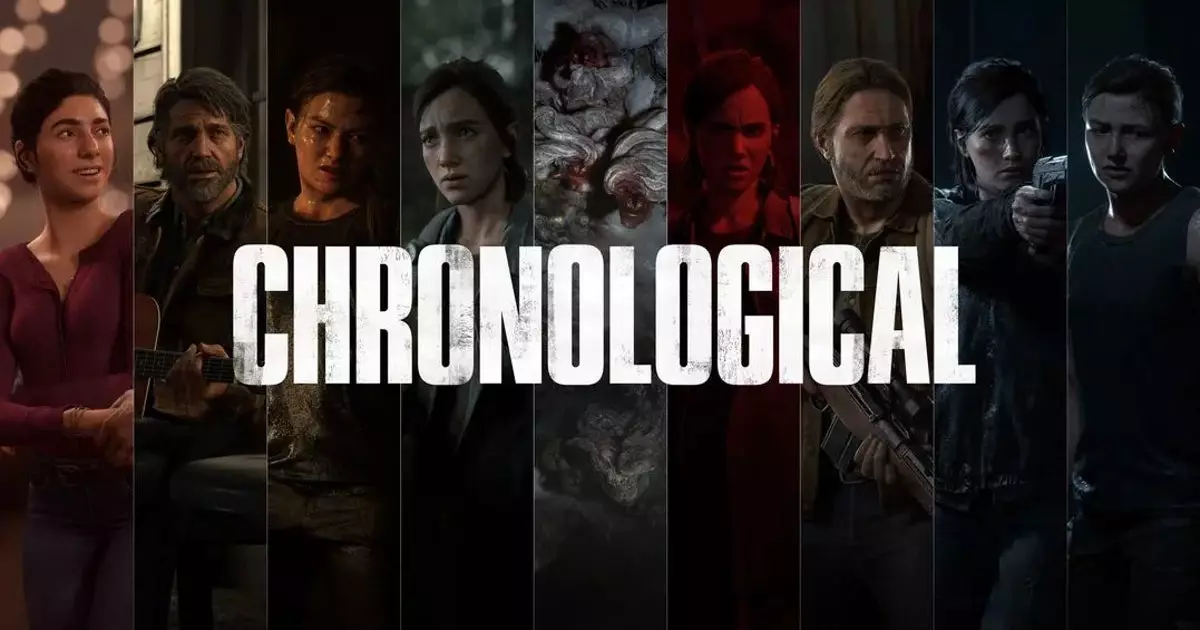In contemporary narrative design, particularly within the realm of video games, the choice of storytelling structure profoundly influences how players engage with characters and themes. Naughty Dog’s decision to introduce a “Chronological Mode” for The Last of Us Part II represents a deliberate challenge to traditional storytelling conventions. While linear narratives are often perceived as straightforward, they can constrain the depth and complexity of character development. Non-linear storytelling, by contrast, invites audiences to piece together the puzzle, revealing motivations and emotional stakes asynchronously. This method enhances immersion, making the eventual revelations more impactful. The game’s original structure—drawing players into a labyrinth of flashbacks and present-day sequences—serves to mirror real trauma, memory, and the fractured nature of grief. Ironically, attempting to ‘straighten’ this narrative may dilute the very emotional resonance that makes the game compelling, reducing its layered storytelling to a chronological timeline that feels less like art and more like a hurried recapitulation.
Is Reordering Better Really the Goal?
Naughty Dog’s claim that experiencing the story chronologically will deepen understanding is, at best, a contentious assertion. It presumes that the audience’s grasp of narrative is limited solely by its presentation order, ignoring the subtlety and complexity embedded within non-linear stories. The non-linear approach, in fact, invites players to interpret themes like revenge, trauma, and empathy in a layered manner. By exposing events in chronological order, viewers risk stripping away the ambiguity and emotional tension that makes the original experience so visceral. The game’s narrative design is akin to a symphony, where the deliberate play of themes across different movements creates emotional crescendos. Flattening that orchestration into a single, unbroken timeline may diminish rather than enhance its artistic impact. This move might appeal to those who prefer straightforward storytelling, but it undermines the sophistication that the original narrative demanded.
The Breach of Artistic Intent and Potential Consequences
Introducing a mode that reorders a deliberately non-linear story raises questions about artistic intent. The creators designed The Last of Us Part II to operate in a specific temporal architecture; altering that risks eroding the craftsmanship that defined its emotional depth. The game’s layered flashbacks serve as a mirror to Ellie and Abby’s fractured journeys—revealing their internal conflicts and moral ambiguities gradually. Flattening these elements into a chronological experience may offer clarity but at a significant cost: the richness of perspective, the surprise of revelations, and the moral complexity that challenge players to think critically. Furthermore, this reinterpretation could set a troubling precedent, suggesting that narrative complexity is something to be flattened or simplified for casual consumption, ultimately reducing video games from art to disposable entertainment. Such a move risks diminishing the medium’s capacity for nuanced storytelling and may alienate fans who appreciated the original’s daring narrative form.
The Cultural and Emotional Impact of Narrative Choices
The decision to create a chronological play mode also touches on broader cultural questions about how stories shape our understanding of human experiences. The Last of Us Part II explores themes of vengeance, forgiveness, and the cyclical nature of violence—concepts that are inherently complex and morally ambiguous. Presenting the game’s storyline in order might foster a superficial understanding but fails to evoke the introspective discomfort the original structure provoked. Good storytelling, especially in media as immersive as video games, should challenge audiences to confront ambiguity, rather than offering easy reordering for comfort. Recasting a deeply layered story into a linear format risks stripping away its philosophical depth—turning a reflection on human chaos into a simplistic morality tale.
While fans crave fresh ways to experience familiar stories, this approach must be balanced with respect for the narrative’s core emotional and thematic intentions. Crafting an alternate viewing experience is valid, but doing so should be done with mindfulness rather than as a dismissive attempt to make the story ‘more accessible.’
Embracing the Complexity of Stories in Unique Mediums
Ultimately, storytelling—whether in literature, cinema, or games—thrives on complexity. The Last of Us Part II’s non-linear narrative exemplifies this, emphasizing that stories are often messier than chronological timelines suggest. To dismiss or trivialize that complexity in favor of reordering reduces storytelling to a superficial exercise. True engagement with art requires patience, curiosity, and an appreciation for how structure influences meaning. For Naughty Dog, this move to offer a chronological mode feels somewhat like a concession to ordinary expectations—failing to recognize that part of the game’s power lies precisely in its fractured timeline. Challenging players to piece together fragmented memories and truths is what elevates the experience from mere entertainment to powerful art. Diluting that experience risks turning a profound exploration of human nature into a mere linear walkthrough, stripping away its emotional potency and cultural relevance.


Leave a Reply